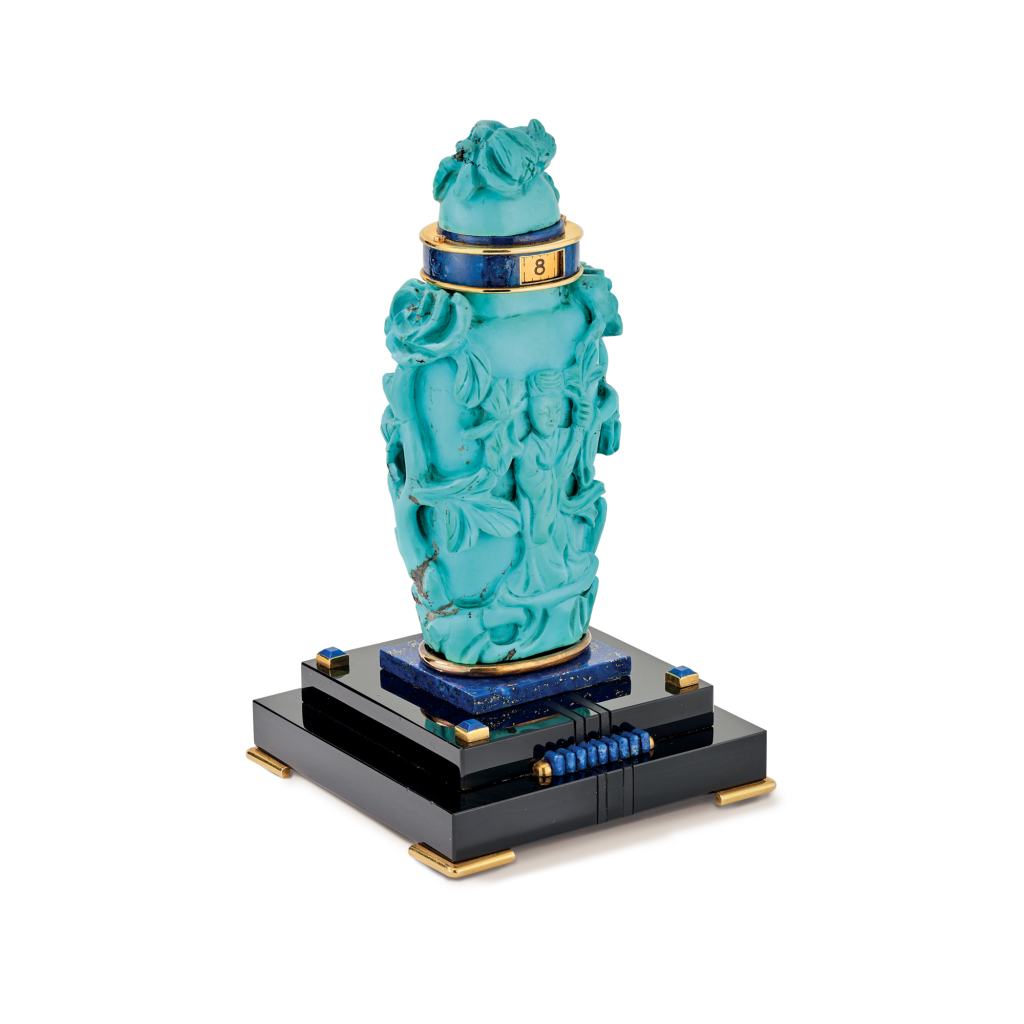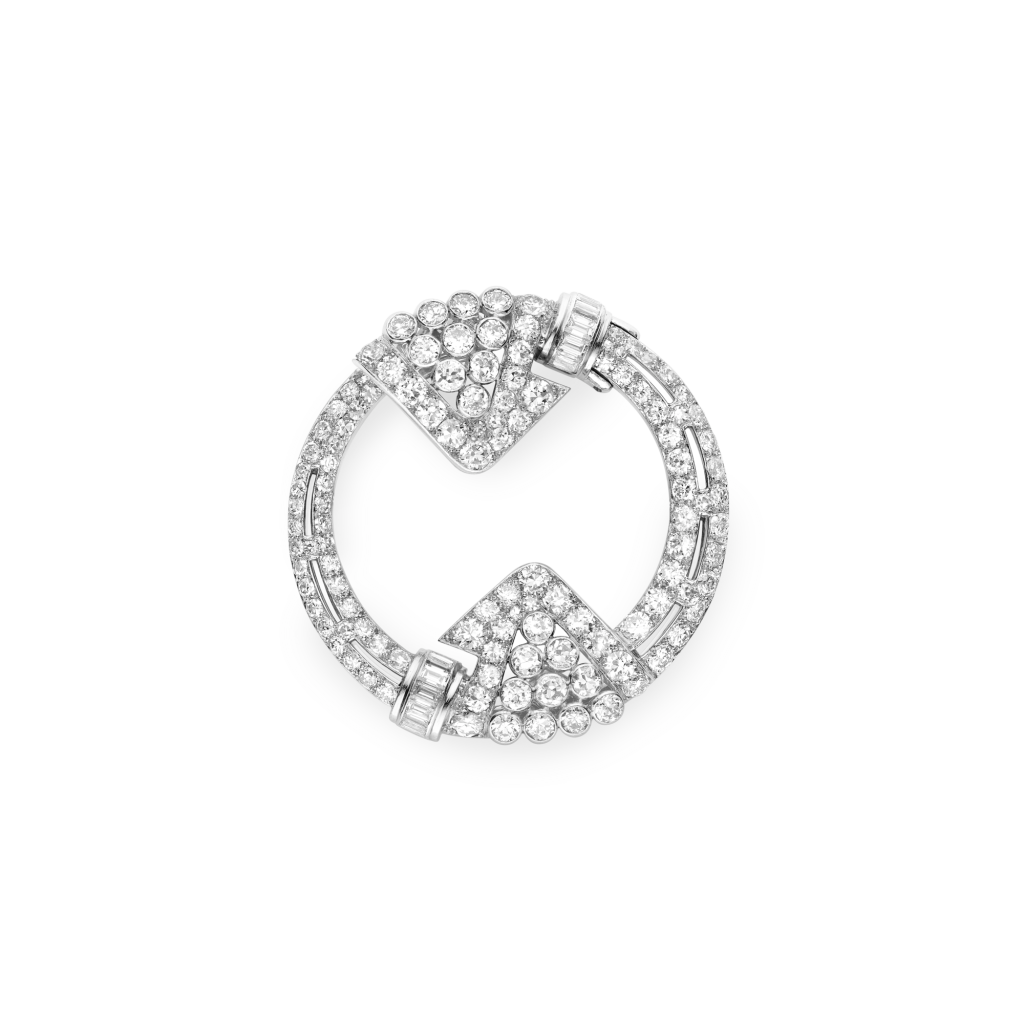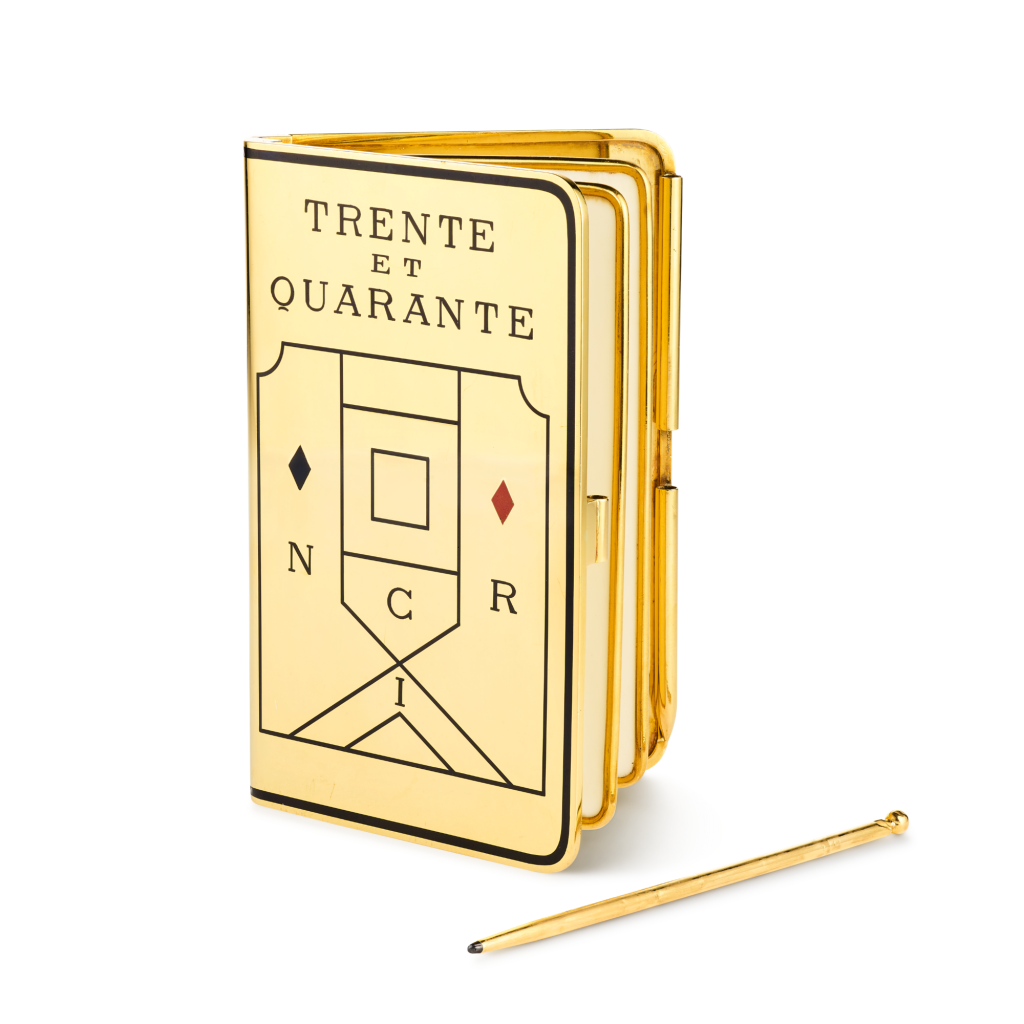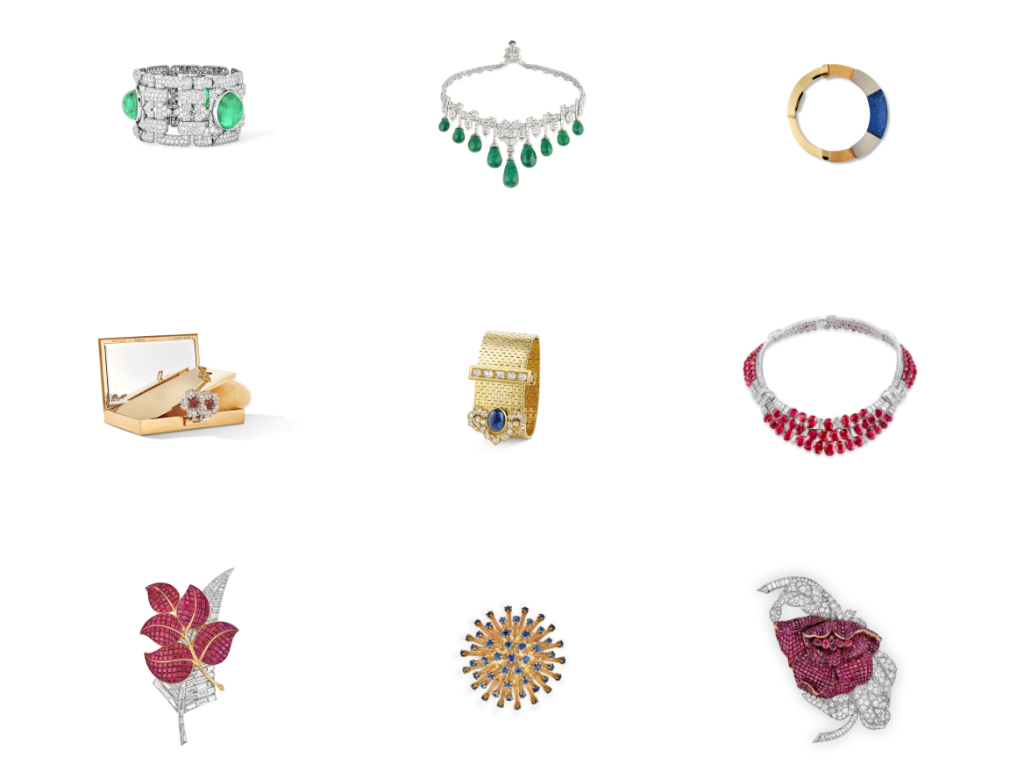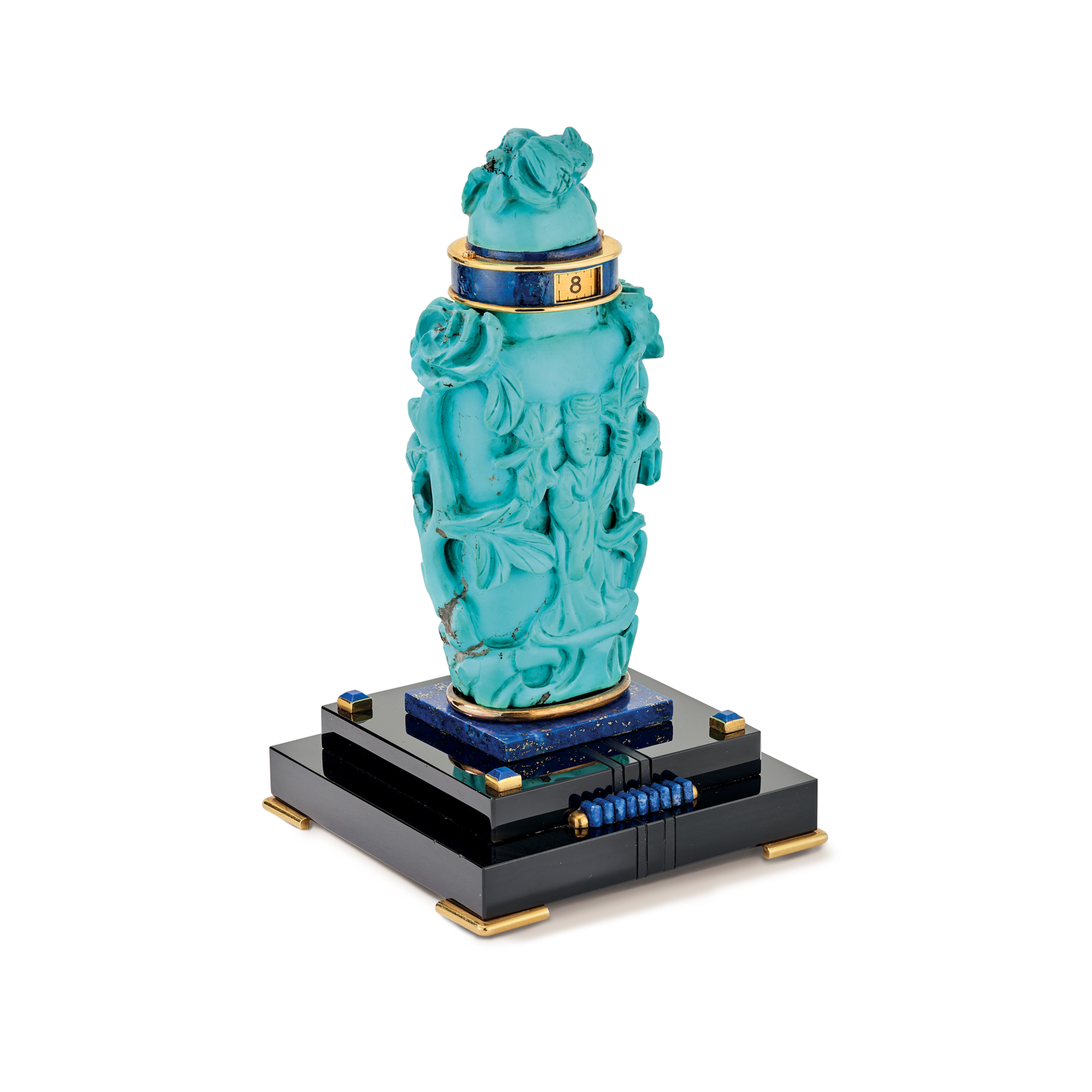
Snuff bottle clock

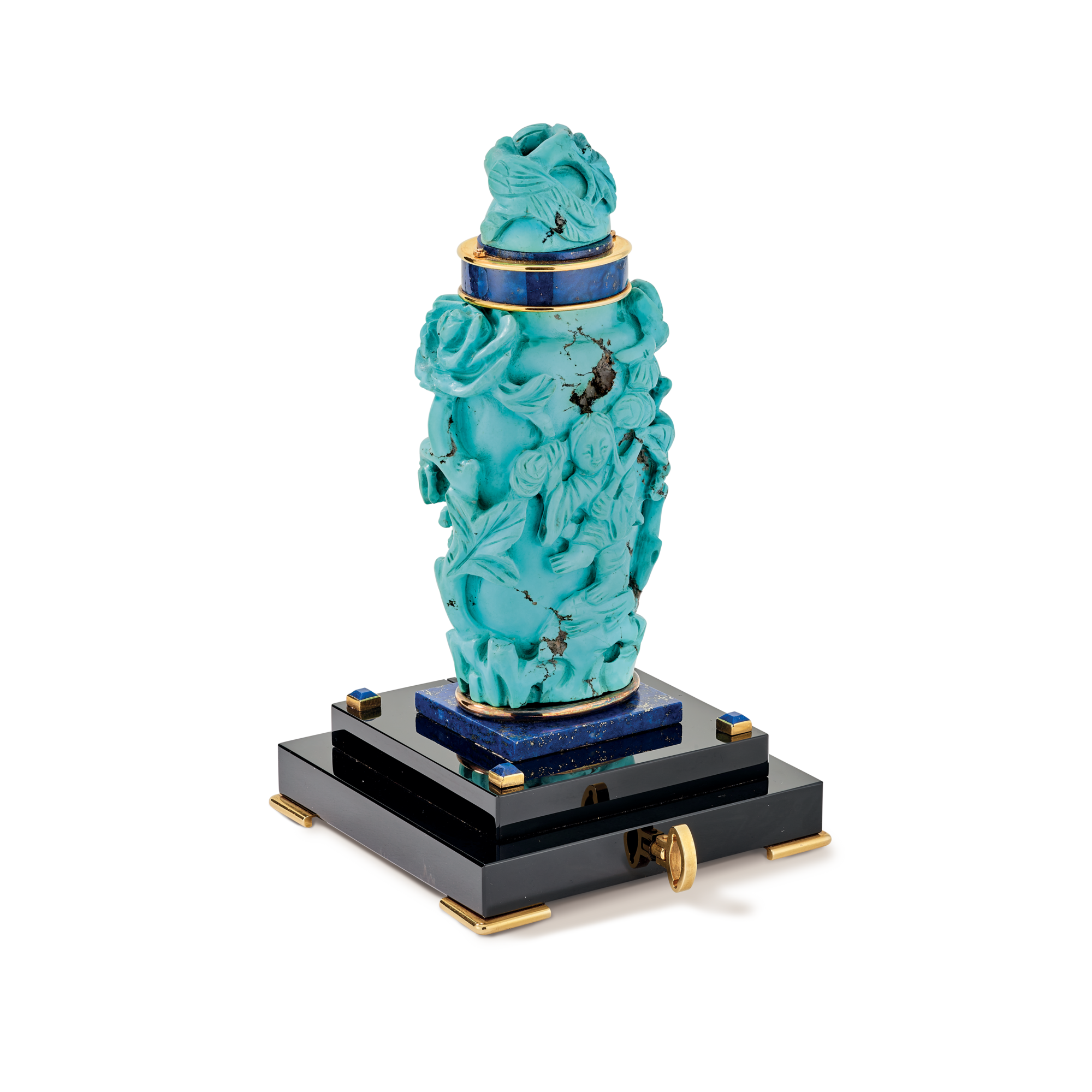
Creation details
- Creation year 1930
- Stone Lapis Lazuli
- Stone Onyx
- Stone Turquoise
- Material Gold
- Usage Watch
- Dimensions 120 × 70 × 70 mm
Both utilitarian and decorative, the small snuff bottle clock broke with the watchmaking tradition to become an objet d’art. This piece reuses an old Chinese snuff bottle made of carved turquoise, decorated with a female figure surrounded by plants.
In order to transform the snuff bottle into a small clock, a band of yellow gold with blue enamel imitating lapis lazuli was placed around its neck. Black enamel numbers indicating the time appear in a rectangular opening within this band. The piece rests on a band of polished yellow gold, itself fixed to a quadrangular tiered base of onyx and lapis lazuli, adorned with a knurled bar, also of lapis lazuli.
Art Deco Asian arts
During the early decades of the twentieth century, Asian art was all the rage, as witnessed in the famous apartments of the couturier Jacques Doucet, which were entirely decorated in the Art Deco style at the very end of the 1920s. His living room contained, among other things, a cabinet by Paul-Louis Mergier, inspired by Chinese cabinets, and was preceded by an Oriental-style room with walls covered in Chinese paintings.
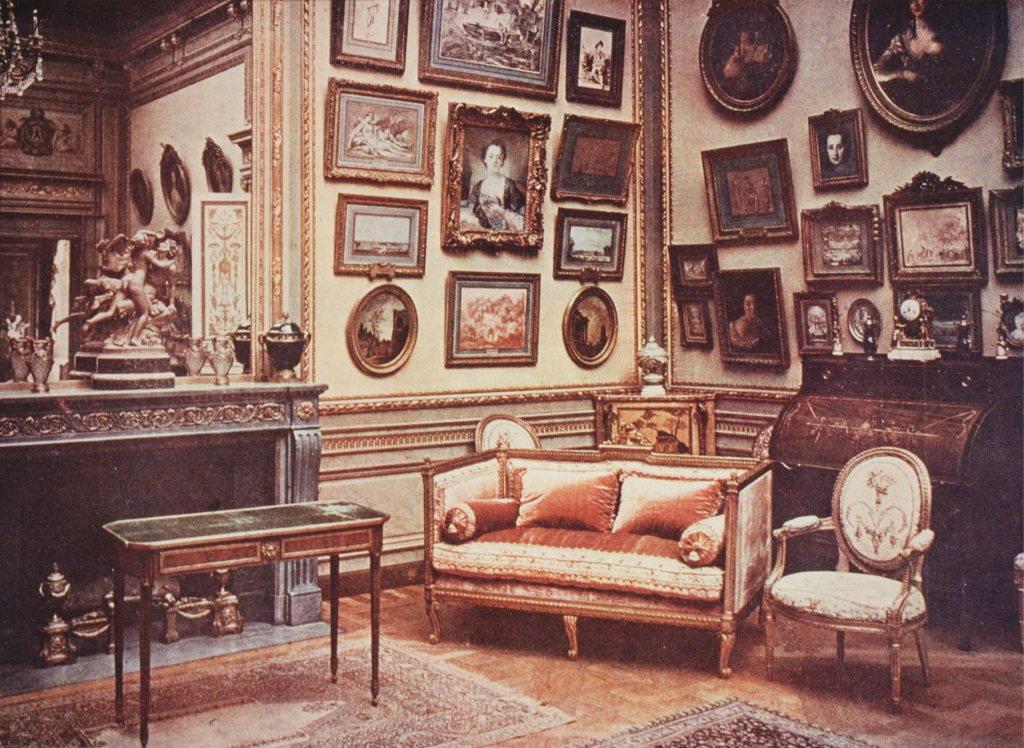
The legacy of the mounted vases in the 18th century
In addition to the taste for Far Eastern arts that emerged in the 1920s, this small clock followed on from an artistic practice inherited from the eighteenth century. At that time, objects manufactured in China, like porcelain, ceramics, and snuff bottles, were part of a prolific trade aimed at European collectors. This practice was at its height during the reign of Louis XV. The snuff bottle clock is a notable example, with its metallic additions and its stand. By adopting this ancient practice of reusing Asian art objects, Maison Van Cleef & Arpels offered its retake on the distinguished watchmaking tradition.
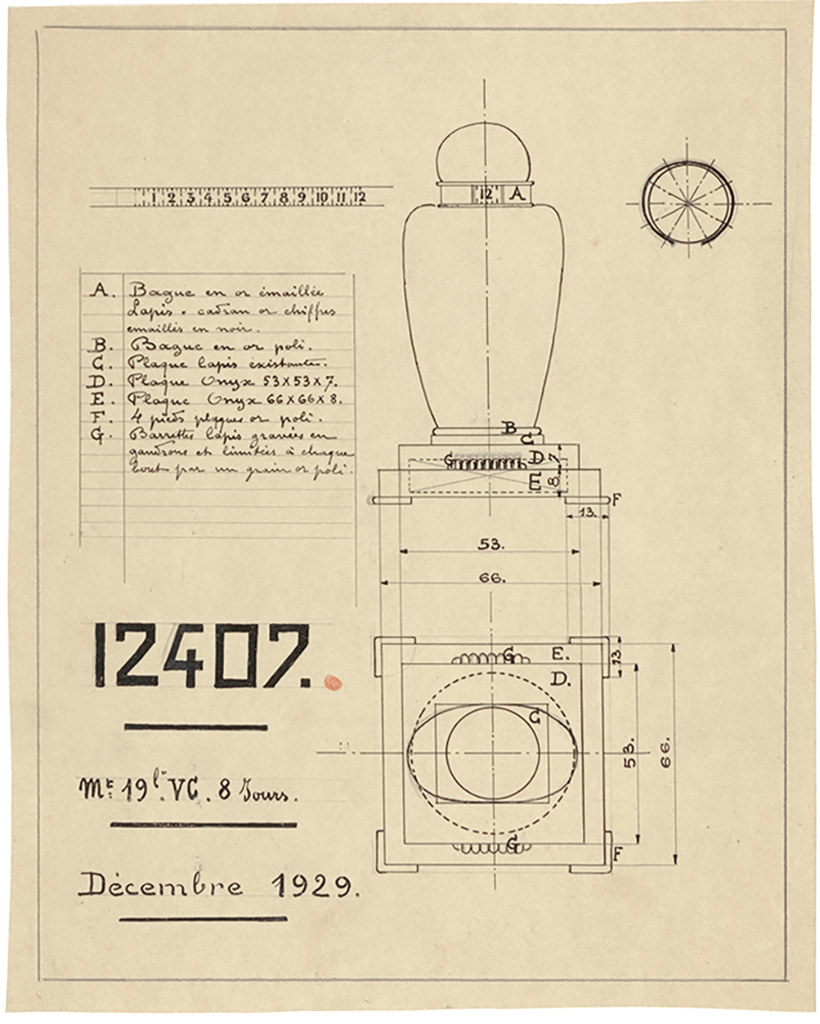
To go deeper
